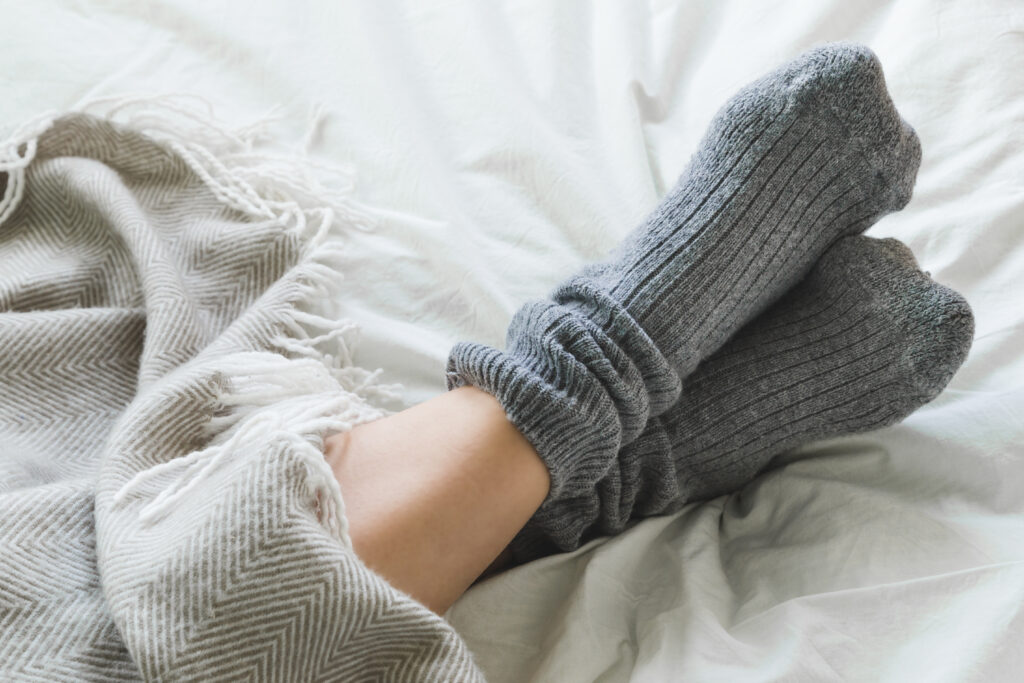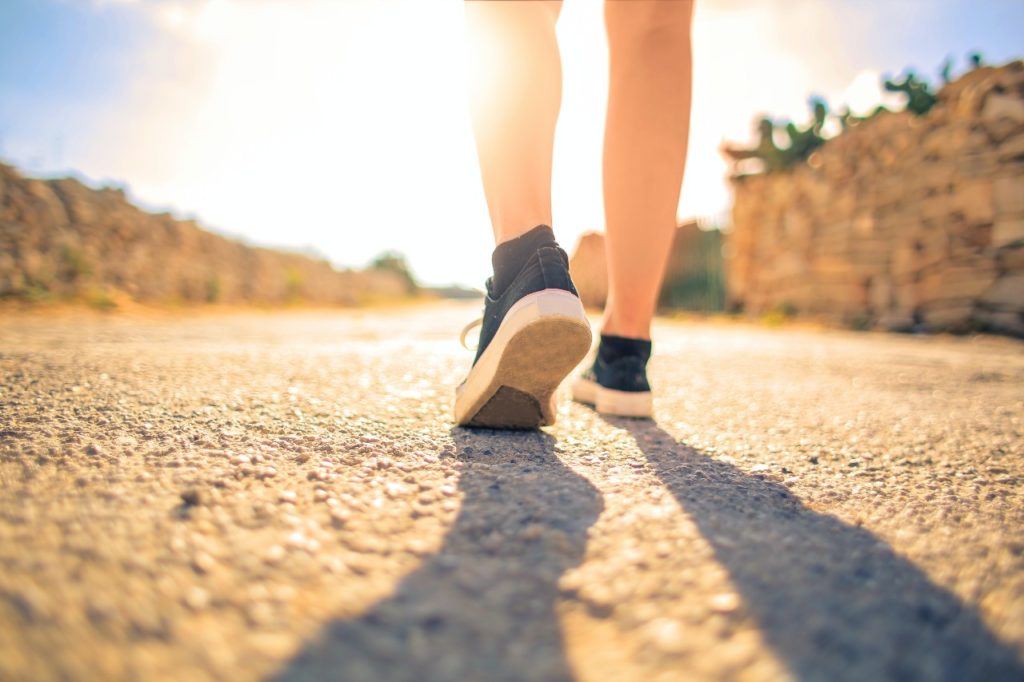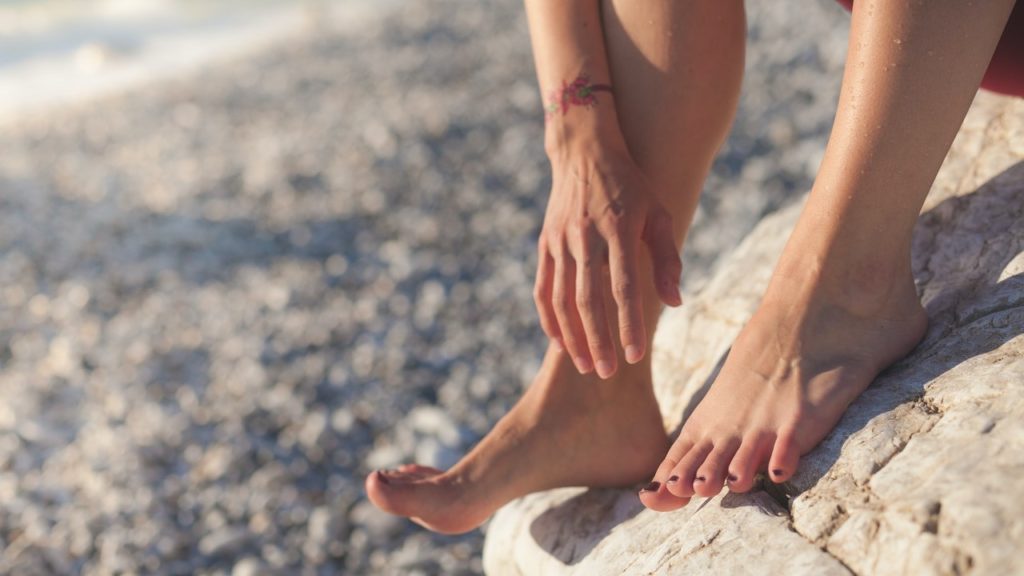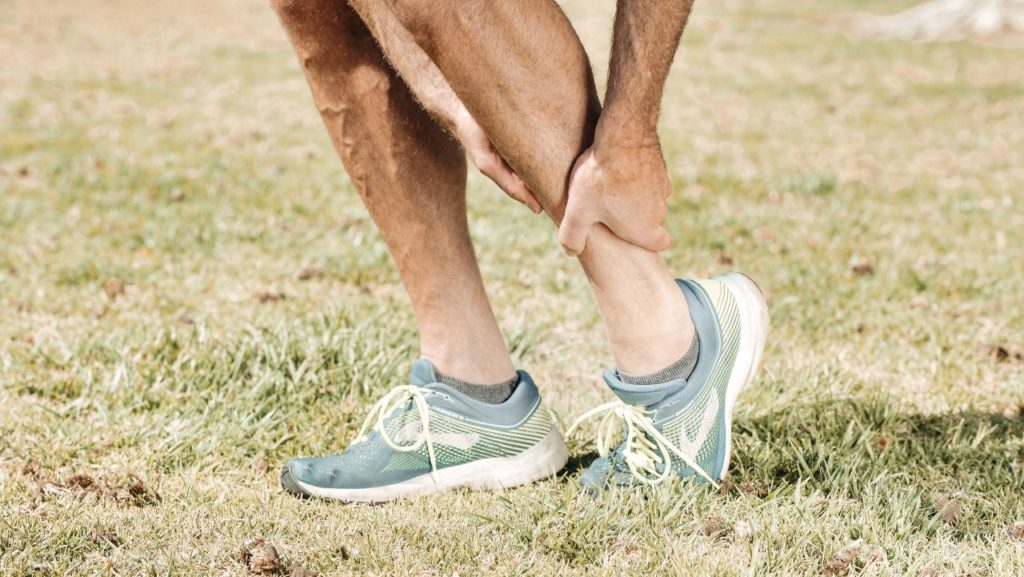By Heather Leeb, DPM, FACPM, AACFAS, DABPM
Socks may seem innocuous daily, but an ill-fitting pair can cause many problems.

Socks that are Too Loose
If your socks are too loose, they can bunch up under the toes, causing pain with every step. They can also slip off at the heel and increase your risk of blisters. It’s never fun to stop mid-stride to remove your shoe and pull your sock back into place.
Socks that are Too Tight
Socks that are too snug can constrict blood flow and leave behind a sore indentation around the lower leg or ankle with swelling. That too-tight band can also irritate the skin. Socks that are too tight can also restrict the toes from moving well when walking and put extra pressure on bunions or hammertoes, causing more discomfort than they already do.
A Sock for Every Occasion
Different types of shoe gear and activities require different kinds of socks. Running and sports activities require socks with extra padding at the sole and moisture-wicking styles. Seams that press on the toenails of runners predispose them to an increased risk of nail problems, like bruising and ingrown nails. What if you’re spending the day outside on a cool Fall day raking leaves? Think warm wool styles that keep those toes from getting cold while naturally wicking away extra moisture. For casual sneakers, just be sure that the sock covers any part of your foot in the sneaker to avoid friction and skin irritation; wear taller socks with high tops to avoid pesky blisters at the back of the heels. Dress shoes require thinner socks, so your toes don’t feel cramped and the top of your foot doesn’t get irritated in these shallower, narrower styles.
Socks for Different Conditions
Socks can play a big role in managing medical conditions and keeping the feet healthy. For example, sock fit is extra important for diabetics. We don’t want seams that can create pressure points that lead to blisters, sores, or wounds. Sweaty feet or athlete’s foot? Think moisture-wicking options that will keep the feet feeling drier and help manage odor.
Bottom line: You want your socks to feel snug from toe to heel but not too tight that they leave an indentation. The socks shouldn’t shift in your shoes when walking either. Check your sock drawer and discard any socks stretched out over time and any that may have a hole or two. Those holes can lead to more problems than the next pair is worth.





